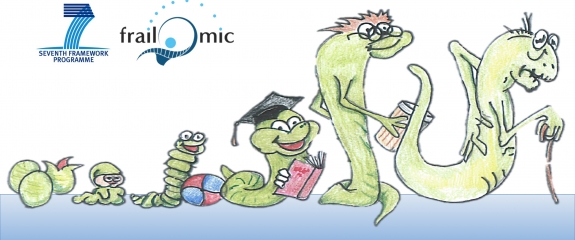Wormy secret to longer life

The regenerative abilities of the flatworm Macrostomum lignano serve as a model for how humans might regenerate tissues.
Humans have long dreamed of finding the secret to eternal youth and research is demonstrating the remarkable regenerative powers of worms that might finally produce results. Macrostomum lignano are providing insights into to way they battle diseases and this information may help us humans live longer and healthier lives.
Despite the benefits of better living conditions and modern medicine, time still takes its relentless toll on our bodies. We are living longer but age-related diseases such as dementia and other neurodegenerative conditions are robbing people of healthy ageing. We are living longer but not necessarily better lives.
Could we have found a secret weapon in our centuries old battle against the ageing process – the humble worm. It has long been known that flatworms have the ability to regrow large parts of their bodies (after losing them). Meanwhile, roundworms may hold the secret to counteracting neurodegenerative scourges like Alzheimer’s disease and conditions such as muscular dystrophy. It seems that these creatures are a rich source of clues about the pathology of ageing and how we too might regenerate tissues.
In the MacModel project researchers are using the flatworm M. lignano, normally found in the tidal sands of the Adriatic Sea, to investigate ageing mechanisms. Research has shown that these worms have the remarkable ability to regenerate. In fact, it seems that the worms tend to live for longer after repeated amputation, suggesting that something about the process of regeneration also serves to rejuvenate the animal itself.
However, in a recent study serially beheading worms to induce regeneration seemed to decrease survival versus intact worms. But there was one major difference in this work than experiments reporting contrary findings – both worms that underwent amputations and those that did not tended to live longer than the median 200-day lifespan seen in the previous research. The researchers think that the animal is a Methuselah with natural mechanisms to offset ageing - with many worms still alive after a whopping 740 days, including about 70% of the intact worms. This defies the tendency for small organisms to be shorter-lived and researchers speculate that these worms may be naturally long-lived and parasites may have contaminated the worms used in earlier research. It may be that when worms underwent amputation in previous experiments they may have lived longer in the previous research not because they rejuvenated, but because the cutting eradicated their unwanted guests. Looking at the worm’s genome it seems that several genes are more active in older worms. These genes, which are also found in humans, are involved in various processes responsible for a cell’s well-being, and some are already known to benefit lifespan when extremely active in mice and the nematode worm Caenorhabditis elegans.
Can the results be translated into understanding and potential treatments for humans? For now, the researchers behind MacModel are still attempting to unravel how these genes lead to longer life in the worms, before they can be used to aid the development of treatments to extend human life. However, projects like the EU FP7-funded FRAILOMIC Initiative might provide some insight. The FRAILOMIC initiative is designed to use biomarkers to determine the factors that turn frailty into disability. The main objective is to develop clinical instruments to predict the risk of frailty, improve the diagnostic accuracy of frailty in day-to-day practice, and to assess the prognosis of frailty in terms of disability and other adverse outcomes. Having measured levels of blood and urine biomarkers in approximately 75,000 participants, the project is about to enter the reporting phase where these laboratory biomarker data will be combined with clinical biomarkers obtained from the same cohort to develop predictive, diagnostic and prognostic models in both the older general population and those people with attributes that confer a higher risk of frailty (e.g., cardiovascular risk factors). A selected set of biomarkers will be validated prospectively and assessed to find best fit models, which will guide the development of ready-to-use kits to be used in the clinical setting. It may eventually be possible to cross reference both clinical and non-clinical understanding. MacModel have produced a high-quality annotated genome sequence for M. lignano, along with other genetic modification tools that could be used to produce a powerful model for further studies into stem cells and ageing. A research project called REPROWORM is using worms to look at reprogramming cells to regenerate brain and nerve tissues in an attempt to treat conditions like Alzheimer’s disease and muscular dystrophy. We are closing in on the ageing conundrum. The researchers behind the project are using the nematode, or roundworm, C. elegans species, which has a similar number of genes to humans – about 20,000 – more than half of which have human equivalents. Ageing may still be a riddle, wrapped in a mystery, inside an enigma but we are pealing the onion one layer at a time.


